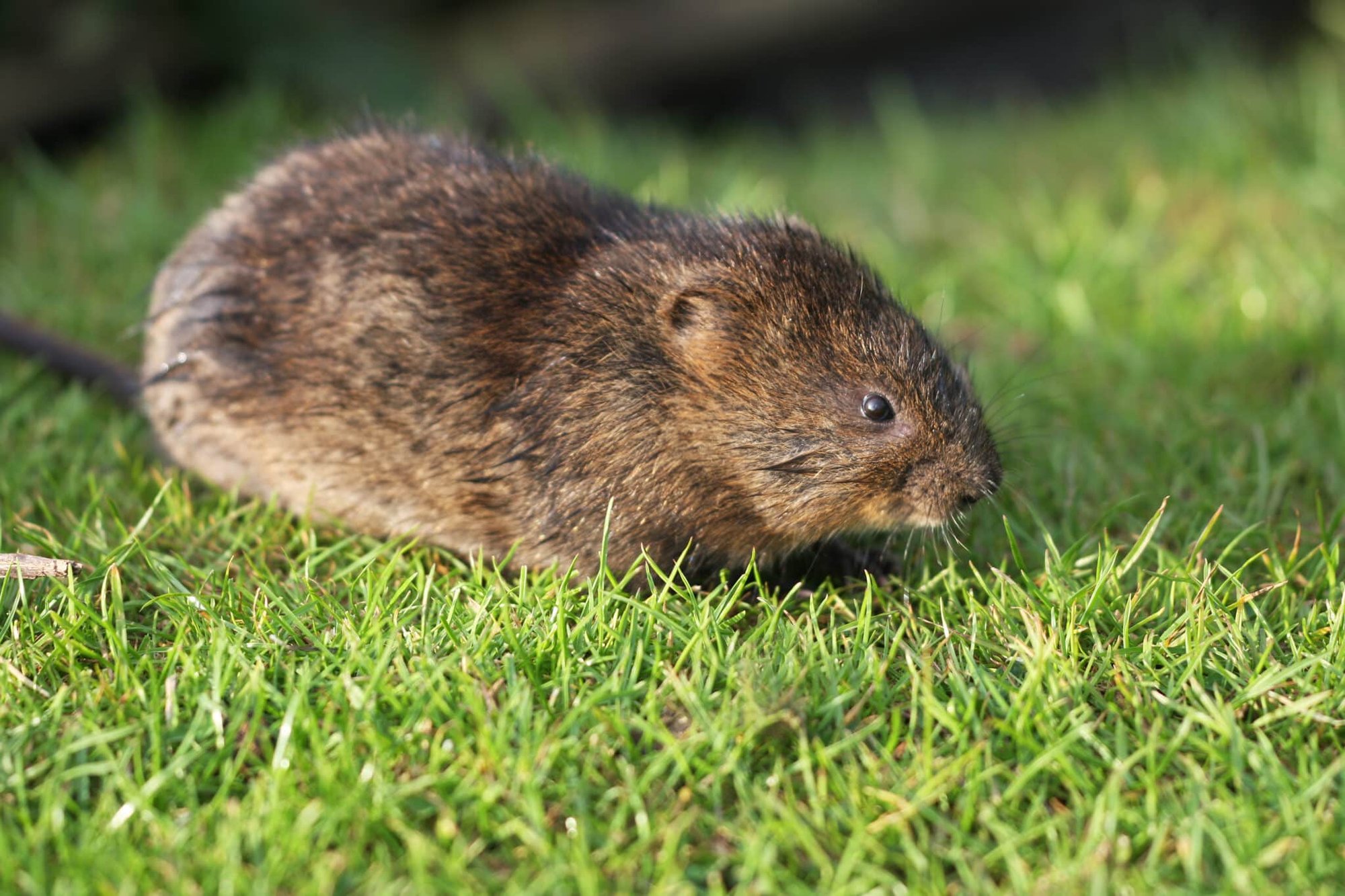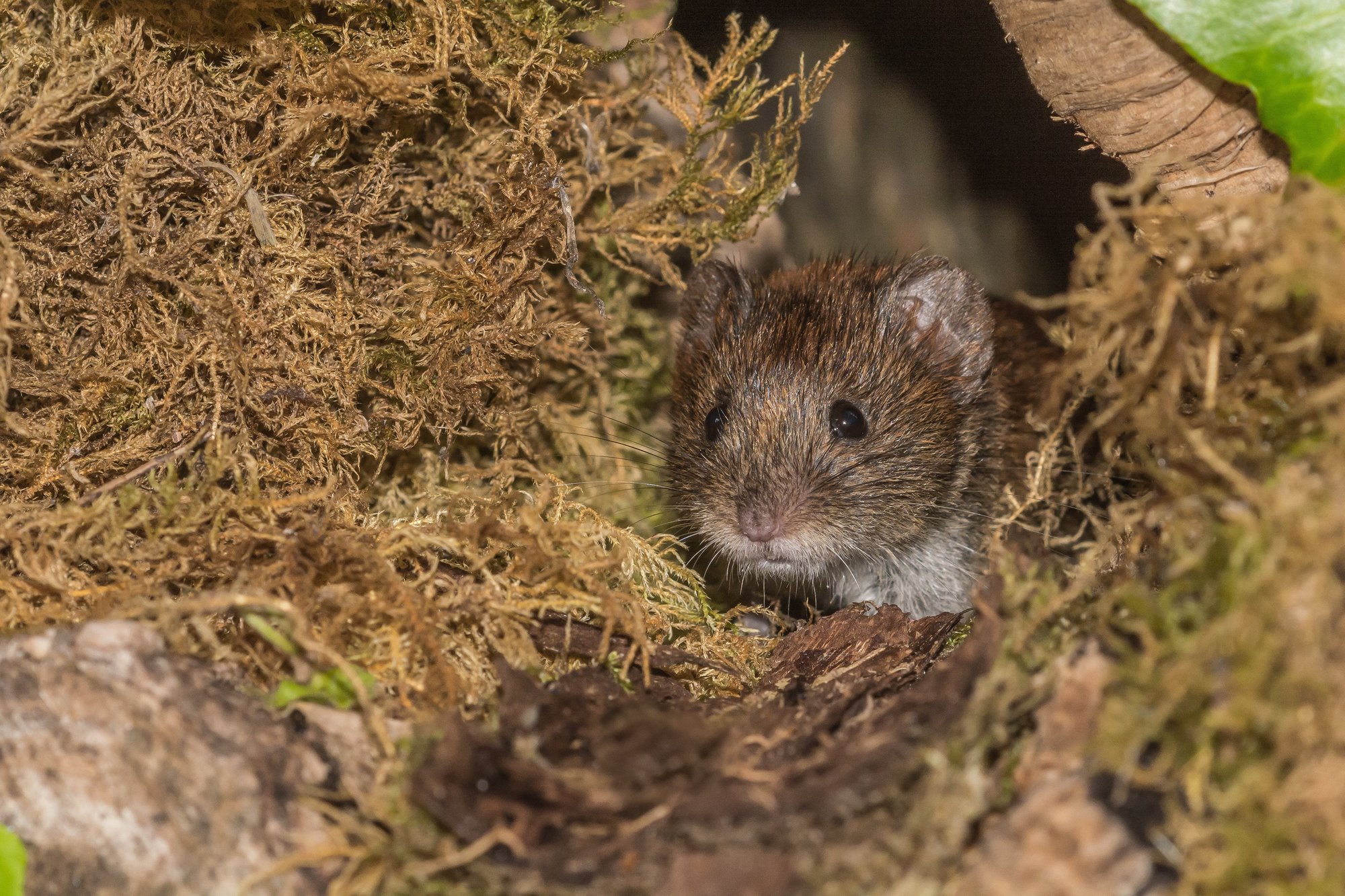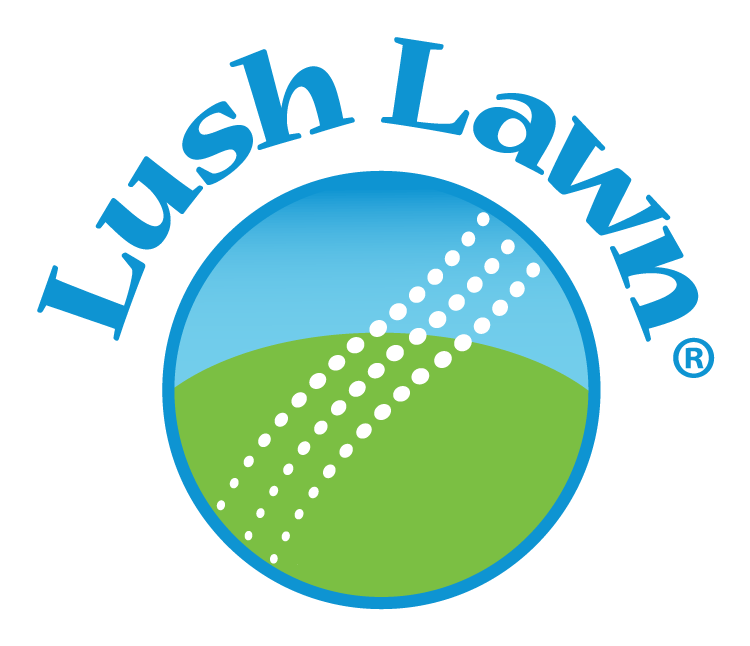Don't Let These Tiny Troublemakers Take Over!
Did you know a single vole can produce up to 70 offspring in one year? These small but mighty pests might look cute, but they're secretly plotting an underground takeover of your carefully maintained landscape!
If you’re noticing strange trail systems in your grass, you may have voles. If so, our vole removal program is your solution to these pesky lawn rodents. Knowing how to get rid of voles in your yard though, is no easy task.
What Is A Vole?
Commonly mistaken for other small animals, a vole is a small rodent resembling a mouse but with a stouter body, shorter hairier tail, slightly rounder head, smaller ears and eyes, and differently formed molars. There are approximately 155 species of voles in the United States. Voles are sometimes confused with moles, gophers, mice, and rats.
What might appear as one vole can quickly escalate quickly into a full-scale infestation, as these prolific breeders multiply rapidly beneath your landscape. Early detection and intervention are crucial to prevent extensive damage to your property. If you suspect moles, then talk to a Lawn Consultant.

Signs You've Got Unwanted Guests
- Mysterious snake-like trails through your lawn
- Disappearing bulbs and plant roots
- Bark damage around trees and shrubs
- Surface runways in your grass
- Vole burrows look like holes in the lawn or around the bases of trees



Vole Damage To Lawn
Vole damage happens when voles start moving through your turf and creating pathways through your lawn. They’re typically called vole runways. This kind of damage is most noticeable in early spring after the snow has melted.
Other types of vole damage include:
1. Lawn Damage: Often, voles will burrow underneath the snow during the winter, foraging for sustenance or traveling. Since there is a significant amount of time for them to travel under the snow through the thatch layer, they can create large amounts of damage with the grass dormant and unable to recover. But you won’t notice it until all of the snow has melted.
2. Tree Damage: Voles can also cause damage to trees by gnawing the bark along the root collar. Plants and shrubs are also targeted.
3. Surface Damage: Though vole damage is more significant in spring, it can still be noticed and occur throughout the growing season. People often confuse this above surface trail creating with mole tunneling, however, all species of moles tunnel under the surface and not above it.
If you do notice vole damage, you shouldn’t wait to do something about it.
When Are Voles Most Active?
Voles are active day and night and do not hibernate. They construct either many surface runways or shallow tunnels (depending on the species) in dense grass with numerous burrow entrances. In the winter, they are active under the snow. Their peak breeding activity occurs between March and October, but voles may breed all year long when winters are mild. Based on their high propensity to breed, it's likely if you have one vole you have many.

Vole's Favorite Hideouts These Sneaky Creatures Love
- Dense mulch beds
- Leaf piles and grass clippings
- Overgrown ground cover
- Cozy spots near foundation plantings
Smart Strategies For Vole Prevention
DIY Tips To Keep These Lawn Bandits At Bay:
Voles thrive in dense ground cover, making mulch beds, leaf and grass piles, and tall ground covers their ideal habitat. To naturally discourage these destructive pests, maintain proper lawn care practices by:
-
Maintain a mulch-free zone around tree bases
-
Creates a protective barrier
-
Reduces ideal vole habitat
-
-
Practice Regular Yard Cleanup
-
Remove fallen leaves promptly
-
Collect grass clippings after mowing
-
Keep ground cover trimmed and tidy
-
Home Defense Options Try These DIY Solutions
Natural Repellent Option: If it’s too late, one way to repel voles is by using castor oil-based repellents. Castor oil-based repellents offer an eco-friendly solution for existing vole problems. When applied to your lawn, these treatments make ground vegetation unpalatable to voles, naturally encouraging them to relocate. This creates a protective barrier around your valuable landscape and essentially acts as vole repellent.
Physical Barrier Option: While more labor-intensive, installing underground wire mesh around gardens or prized plantings can help prevent vole damage. However, this method requires careful installation and significant effort.
Need more effective solutions? Let our professional team evaluate your property and design a specialized treatment plan that provides the most effective, long-lasting protection against voles.
Here's The Reality... While DIY methods can help, voles reproduce faster than rabbits at a magician's show! Their explosive population growth means you might need professional intervention to protect your landscape investment.
Our Professional Vole Control Program
What Sets Us Apart:
- Comprehensive property assessment
- Strategic bait station placement
- Professional-grade treatments
- Ongoing monitoring
- Expert technician team
- Proven results
Professional Vole Control: Protect Your Property
Identifying a Vole Problem Subsurface damage to your landscape is often the first sign of vole activity. These destructive pests can quickly multiply, turning a minor nuisance into a serious threat to your property. That's where our expert vole control program comes in. The good news is that our vole control services are highly recommended.
Our Process:
Initial Property Evaluation
-
Identify active vole pathways
-
Assess damage extent
-
Map problem areas
Custom Treatment Plan
-
Strategic control measures
-
Property-specific solutions
-
Preventive barriers
Ongoing Protection
-
Regular monitoring
-
Treatment adjustments
-
Prevention recommendations
Our Professional Vole Management Approach
Effective vole control begins with our comprehensive integrated pest management plan. Our certified technicians start by conducting a thorough property assessment, identifying active vole pathways and potential winter nesting sites. This careful evaluation allows us to develop a targeted strategy specific to your property.
Timing is crucial for optimal results. We recommend beginning treatment in fall, before winter drives increased vole activity. Our experts strategically place secured bait stations around your home and garage, focusing on high-activity areas where voles are most likely to frequent during colder months.
Safety is paramount in our approach. All bait stations are specially designed and secured to prevent access by larger wildlife, such as squirrels and chipmunks, as well as household pets. This ensures effective vole control while protecting other animals on your property.
Ready to protect your lawn? Contact one of our Lawn Consultants schedule a professional assessment and learn more about our proven vole control program.
Lush Lawn Proudly Serves:
Brighton Lawn Service and the surrounding areas: Ann Arbor, South Lyon, Canton, Northville, Plymouth, Livonia, Pinckney and more.
Canton Lawn Service, including Westland, Wayne, Romulus, Livonia, Garden City, Ypsilanti, Inkster, Dearborn Heights, Redford, Novi, Taylor, Farmington, Ann Arbor, South Lyon, Allen Park, Detroit, Grosse Pointe and more.
Grand Blanc Lawn Service and the surrounding areas: Burton, Davison, Fenton, Flint, Flushing, Linden, Swartz Creek, Holly and more.
Lansing Lawn Service Lansing Lawn Service in the following counties: Ingham, Clinton, Eaton, Hillsdale, Jackson, Shiawasee and Ionia.
Rochester Hills Lawn Service and the surrounding areas: Auburn Hills, Berkley, Birmingham, Bloomfield Hills, Clarkston, Clawson, Detroit, Farmington, Farmington Hills, Hunting Woods, Keego Harbor, Madison Heights, Oak Park, Pleasant Ridge, Pontiac, Rochester, Royal Oak, Southfield, Troy and more.
Saginaw Lawn Service and the surrounding areas: Clio, Birch Run, Frankenmuth, Bay City, Midland, and more.





